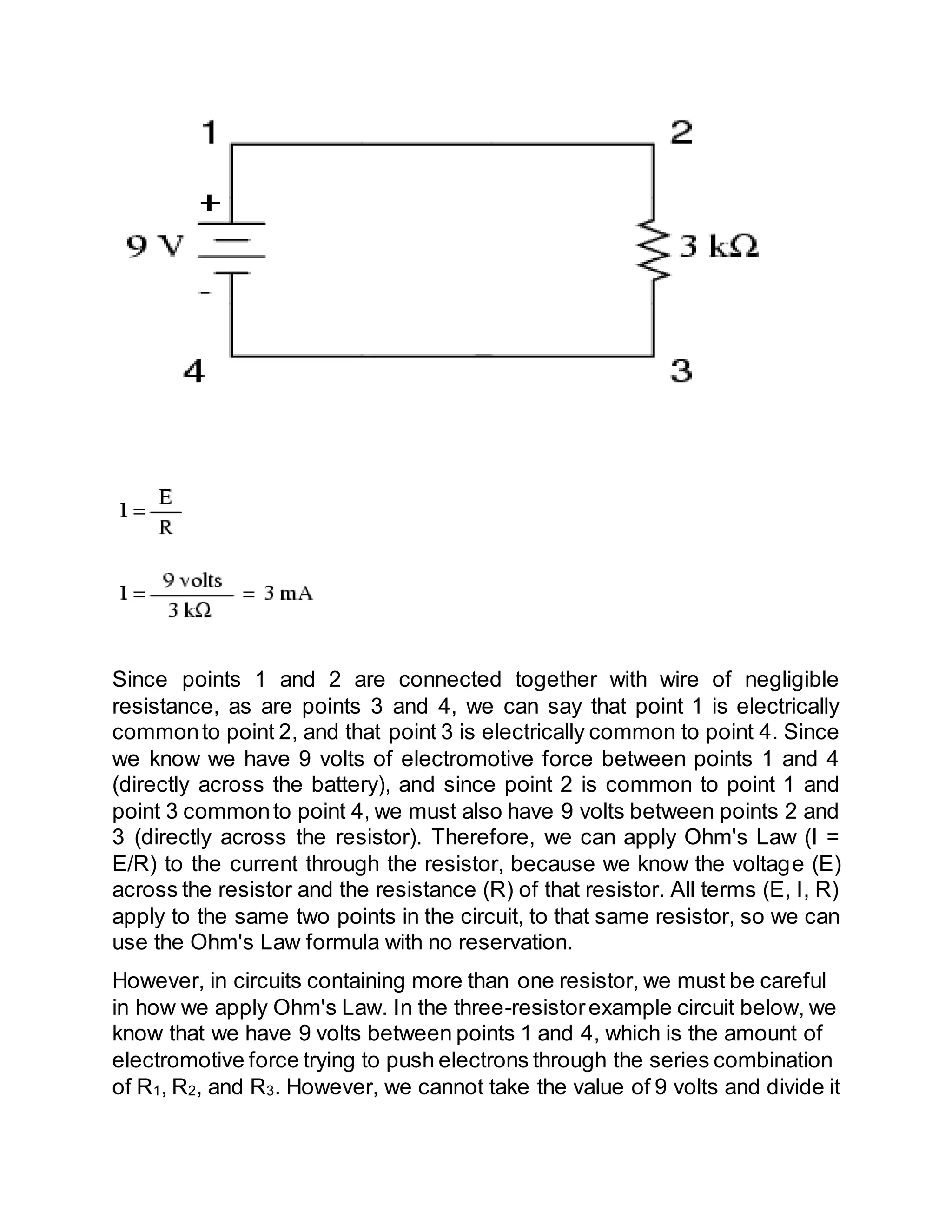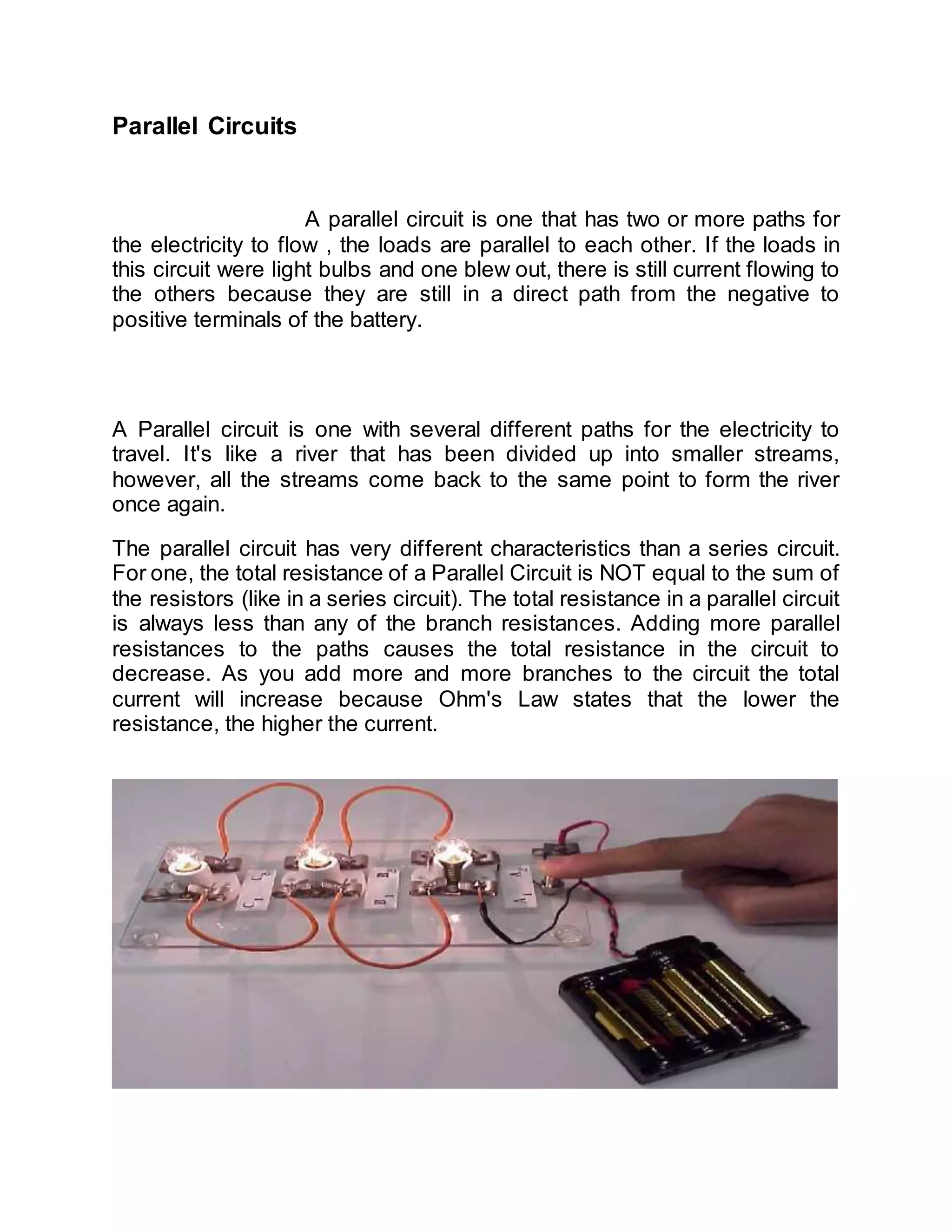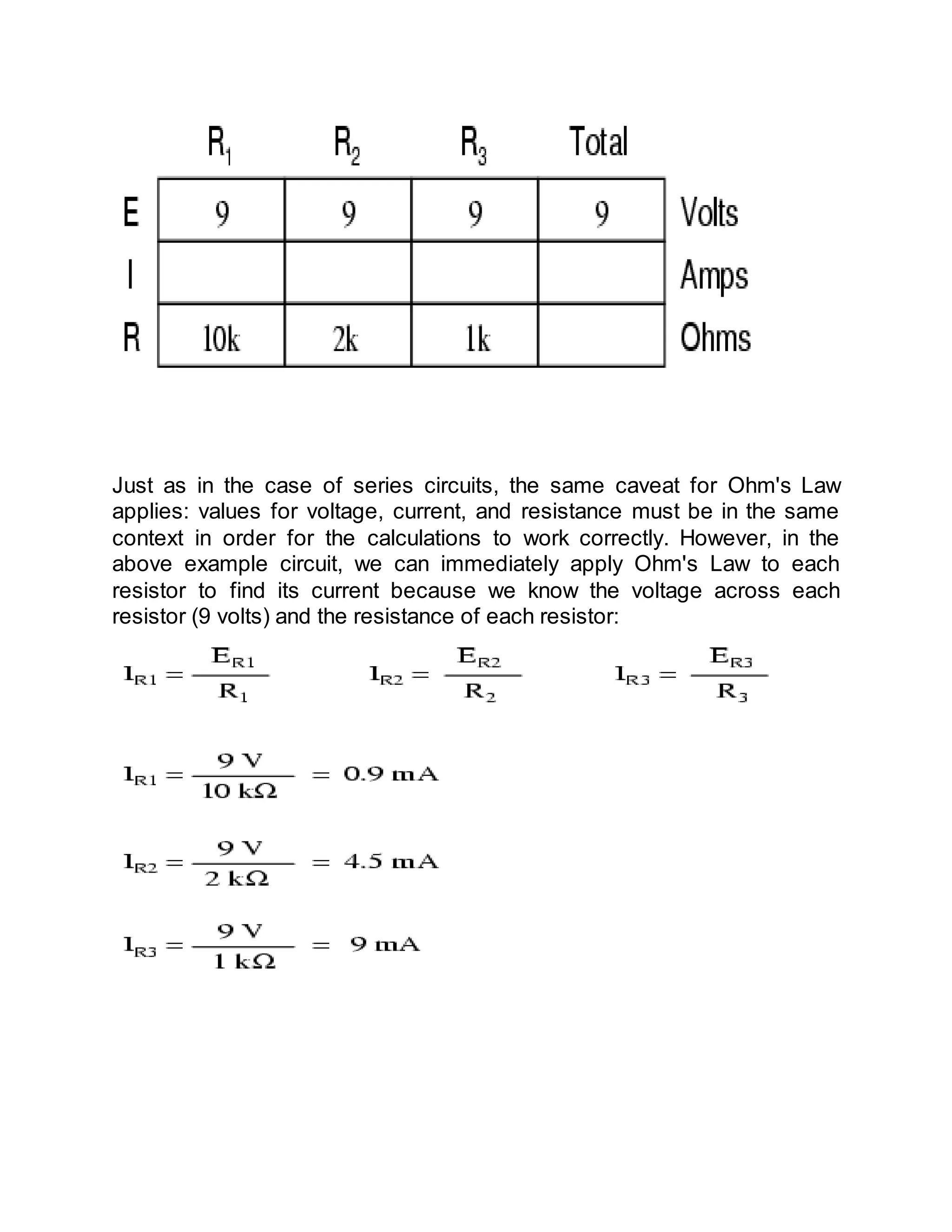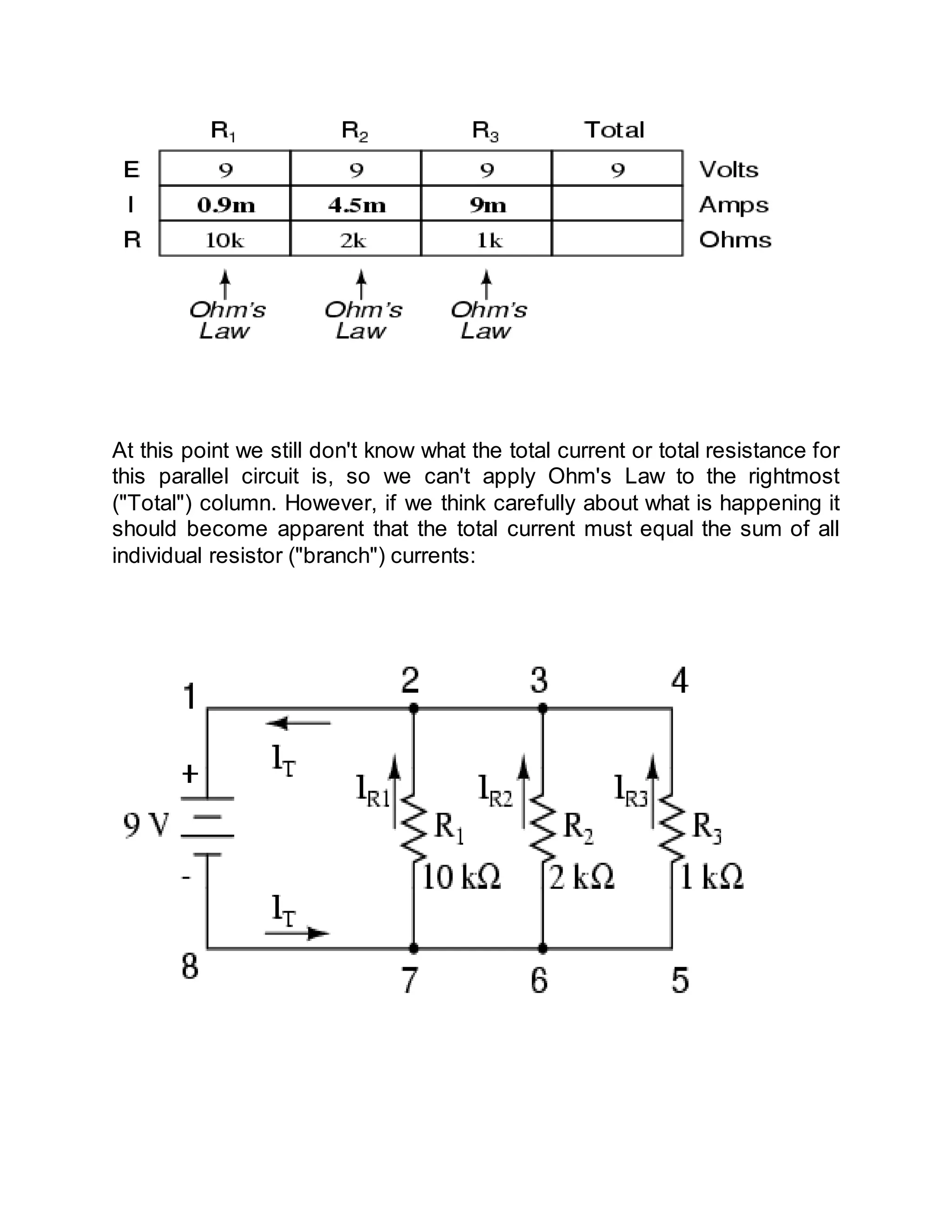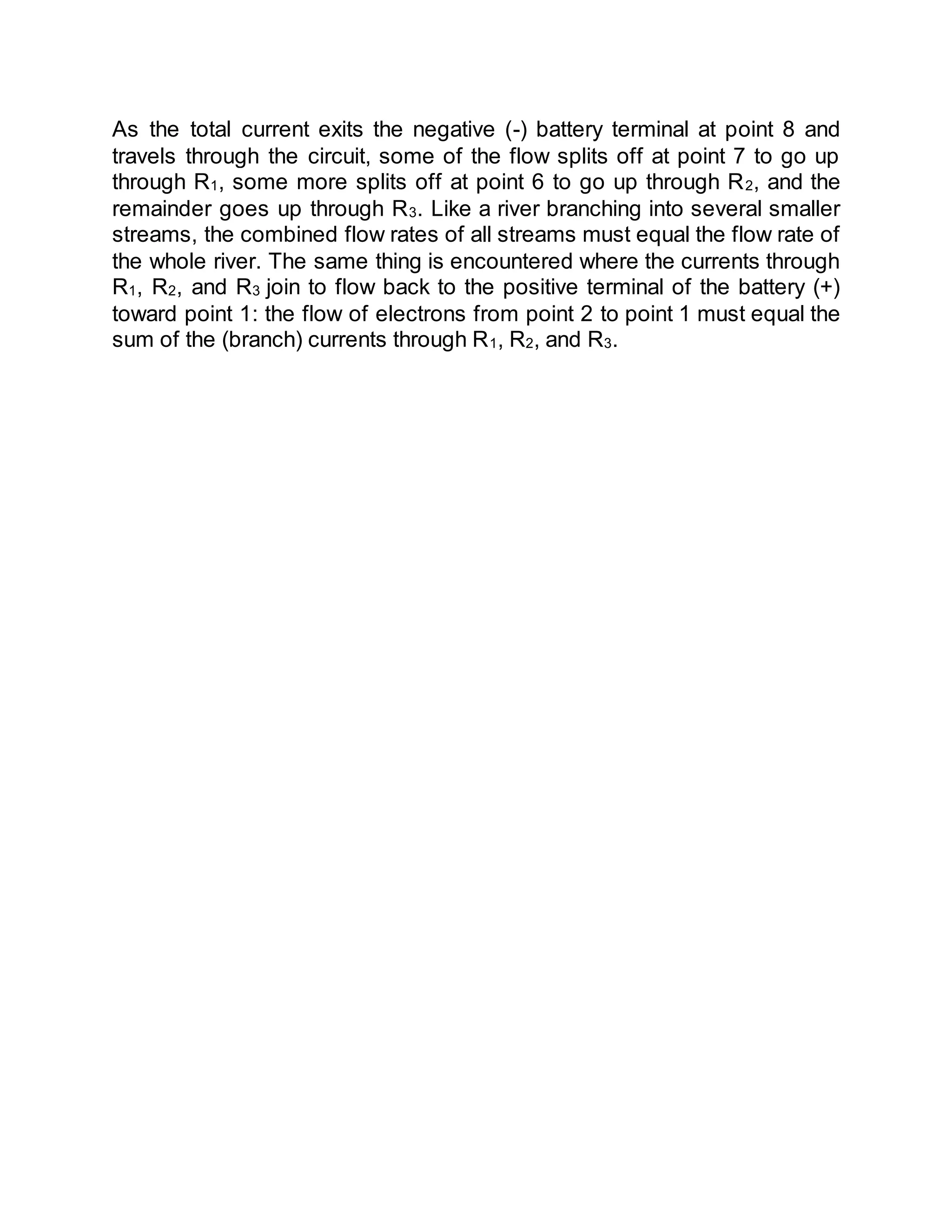A parallel circuit contains multiple paths for electricity to flow. The voltage is equal across all components, while the current through each component depends on its resistance. The total resistance of a parallel circuit is always less than any individual branch resistance, and decreases as more branches are added. Unlike a series circuit, if one component fails in a parallel circuit the others can still function.


